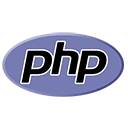Design patterns are essential for creating maintainable and scalable PHP applications. In this guide, we'll explore advanced PHP design patterns, provide real-world examples, and include sample code to help you implement them effectively:
1. Introduction to Advanced Design Patterns
Advanced design patterns are building blocks for solving complex software design challenges. They provide solutions to common problems in a structured and reusable way.
2. Factory Method Pattern
The Factory Method pattern is used to create objects without specifying their exact class. This is useful for implementing object creation that can be extended in subclasses. Here's a sample code for a factory method:
interface Product {
public function create();
}
class ConcreteProductA implements Product {
public function create() {
return "Product A created";
}
}
class ConcreteProductB implements Product {
public function create() {
return "Product B created";
}
}
3. Singleton Pattern
The Singleton pattern ensures a class has only one instance and provides a global point to access it. It's useful for scenarios where you want to limit the instantiation of a class. Here's an example:
class Singleton {
private static $instance;
private function __construct() { }
public static function getInstance() {
if (self::$instance === null) {
self::$instance = new Singleton();
}
return self::$instance;
}
}
4. Observer Pattern
The Observer pattern defines a one-to-many dependency between objects so that when one object changes state, all its dependents are notified and updated automatically. It's widely used in event handling systems. Here's an example:
interface Observer {
public function update($data);
}
class ConcreteObserver implements Observer {
public function update($data) {
echo "Received update: $data";
}
}
class Subject {
private $observers = [];
public function addObserver(Observer $observer) {
$this->observers[] = $observer;
}
public function notifyObservers($data) {
foreach ($this->observers as $observer) {
$observer->update($data);
}
}
}
5. Real-World Examples
Design patterns are commonly used in real-world PHP applications. Here are some real-world examples where design patterns can be applied:
- Dependency Injection Container: Implement the Inversion of Control (IoC) container using the Dependency Injection pattern to manage dependencies in a complex application.
- Routing and Middleware: Implement the Chain of Responsibility pattern to handle HTTP requests, route them to the appropriate controller, and apply middleware.
- Data Access Layer: Use the Data Mapper pattern to separate the domain model from the database layer for more flexibility and maintainability.
6. Conclusion
Advanced design patterns are valuable tools for PHP developers to solve complex software design challenges. By understanding and applying patterns like the Factory Method, Singleton, and Observer, you can create maintainable, scalable, and flexible PHP applications.

